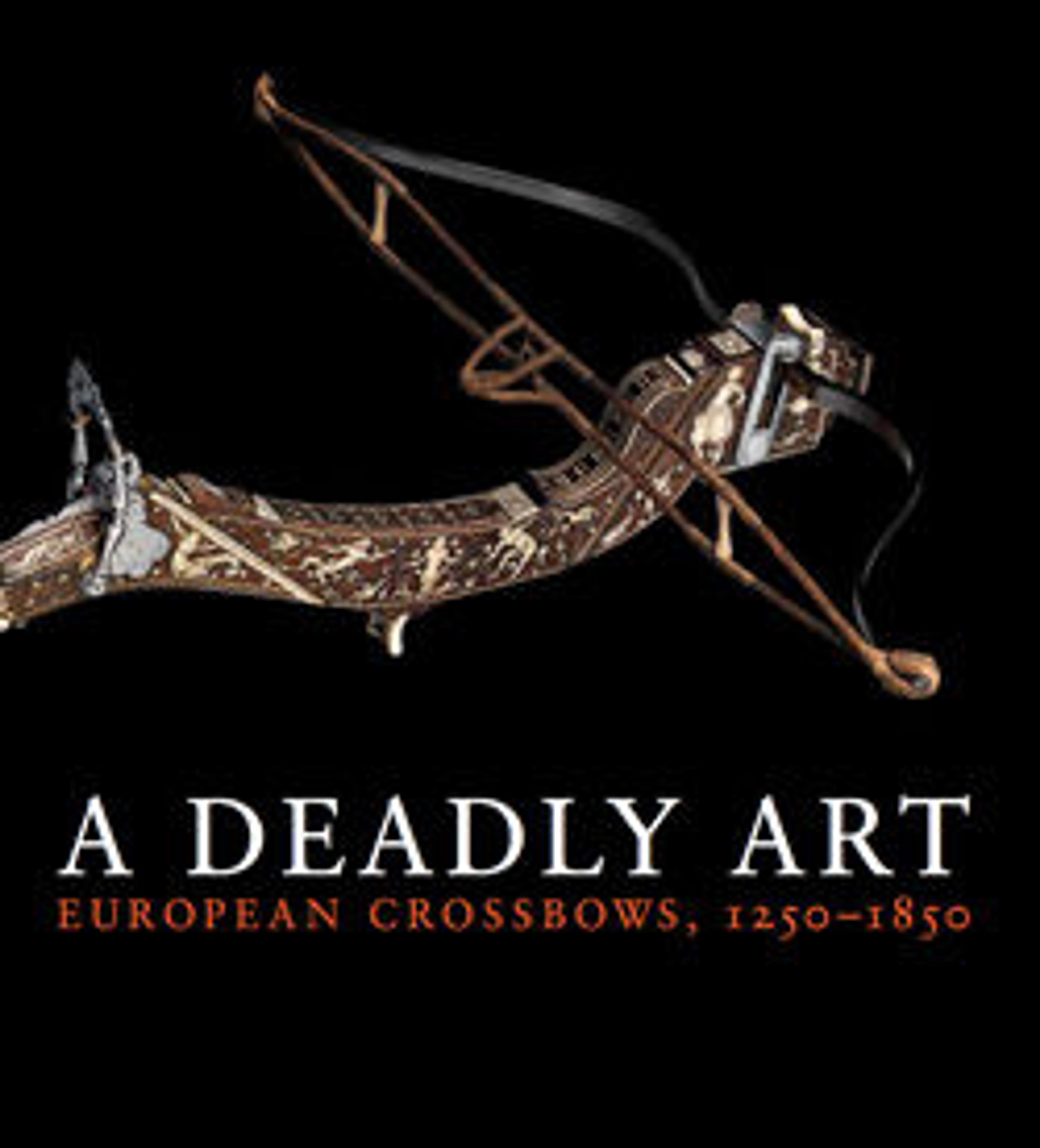Six Crossbow Bolts
The most powerful projectile weapon during the Middle Ages, the crossbow had gone out of general use in warfare by the mid-sixteenth century, as a result of the increasing efficiency of hand-held firearms. The crossbow remained popular, however, as a sporting weapon for target shooting and particularly for the hunt, because of its precision, quiet discharge, and the range of its projectiles—up to four hundred yards, depending on the size of the weapon. Heavy crossbows, widely used in central Europe for big-game hunting, had massive gun-shaped stocks, often veneered or inlaid with engraved staghorn. While the bows and the release mechanisms were the work of specialists, the stocks were made by the same artisans and decorators who provided stocks for firearms.
Lighter forms of the crossbow evolved in Italy and France. These prodds, or stone crossbows, were designed to discharge small stones or clay pellets (rather than arrows) so that the valuable pelts of foxes, ermine, and other small animals would not be blemished. They were lightweight and easy to load. Their distinctive, gracefully shaped stocks of fruitwood were frequently carved or inlaid with bone.
Lighter forms of the crossbow evolved in Italy and France. These prodds, or stone crossbows, were designed to discharge small stones or clay pellets (rather than arrows) so that the valuable pelts of foxes, ermine, and other small animals would not be blemished. They were lightweight and easy to load. Their distinctive, gracefully shaped stocks of fruitwood were frequently carved or inlaid with bone.
Artwork Details
- Title:Six Crossbow Bolts
- Date:early 16th century; 14.25.1576g, probably 17th or 18th century
- Culture:Central European, possibly German
- Medium:Steel, wood (oak), staghorn, pigment
- Dimensions:bolt (g): L. 14 3/4 in. (37.5 cm); Diam. head 1 in. (2.6 cm); Wt. 4.9 oz. (140 g)
- Classification:Archery Equipment
- Credit Line:Gift of William H. Riggs, 1913
- Object Number:14.25.1576c–h
- Curatorial Department: Arms and Armor
More Artwork
Research Resources
The Met provides unparalleled resources for research and welcomes an international community of students and scholars. The Met's Open Access API is where creators and researchers can connect to the The Met collection. Open Access data and public domain images are available for unrestricted commercial and noncommercial use without permission or fee.
To request images under copyright and other restrictions, please use this Image Request form.
Feedback
We continue to research and examine historical and cultural context for objects in The Met collection. If you have comments or questions about this object record, please contact us using the form below. The Museum looks forward to receiving your comments.
